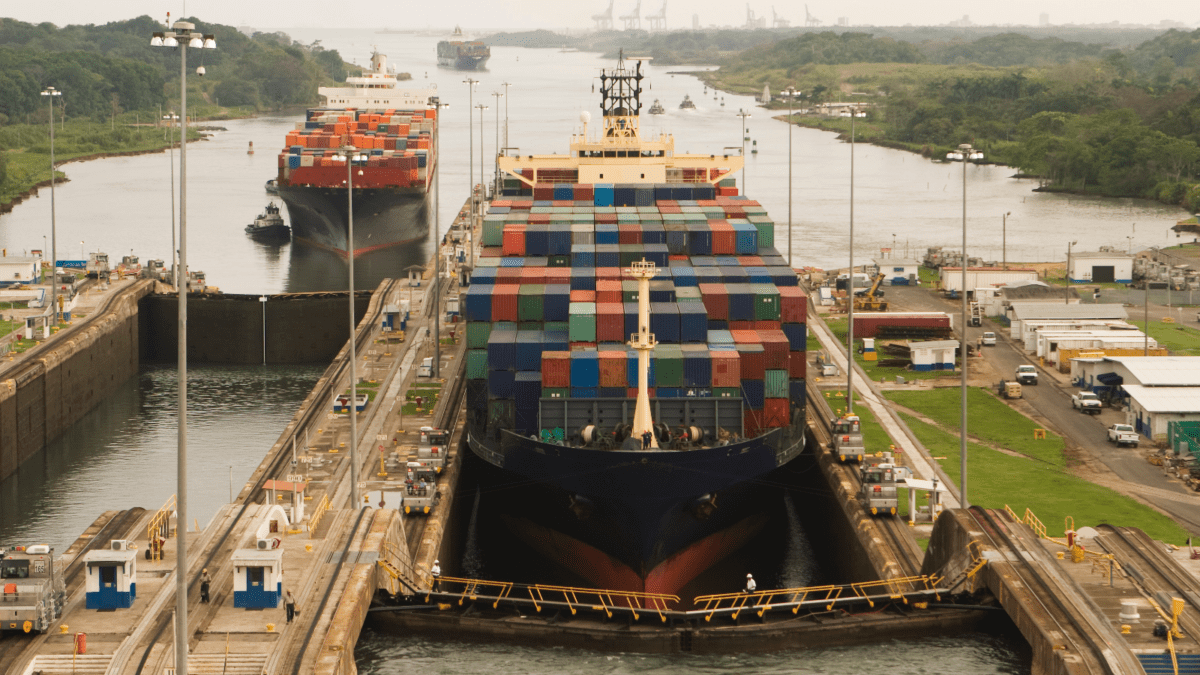Panama Canal woes fuel supply-chain fears for the long haul
Remember the COVID years, when we all became experts on supply chains?
The pandemic and the ensuing lockdowns resulted in the biggest global disruption across the trade, finance, health and education systems, businesses and societies that anyone has seen – outside of world war – in the past century. The supply-chain disruptions shone a spotlight on how countries and businesses can over-rely on a small number of suppliers, even a single source.
Our interest in supply chains only increased during the strange saga of the Ever Given, a 400-metre-long container behemoth – one of the largest container ships in the world – that managed to run aground in the Suez Canal in March 2021, blocking the canal for six days. Given that about 12 per cent of global trade, 30 per cent of global container traffic and more than US$1 trillion ($1.6 trillion) worth of goods traverse the Suez every year, this was a rude shock to the global economy.
Originally reported to be caused by high winds and a sandstorm, the grounding also had an intriguing backdrop of human error and heated on-bridge arguments between the captain and the Suez Canal Authority (SCA) pilots, and between the two SCA pilots. The actual blockage may have been only six days, but as a consequence more than 400 vessels were held up in an estimated 60-day shipping delay, holding up nearly US$60 billion ($93.8 billion) in global trade.
It’s potentially happening again; but this time, it’s the other major canal, the Panama Canal.
Panama is experiencing a drought, caused by the El Niño climate pattern and warmer-than-usual water in the central and eastern tropical Pacific Ocean is contributing to Panama’s drought. The rainy season in central America is later than usual, and the low rainfall has dropped the water levels in the canal’s locks and lakes to record lows (the Panama Canal is a freshwater route). For each ship, 200 million litres of freshwater is used to move it through the locks before being released into the sea. In 2022, an average of 40 ships passed through the canal a day: that number has now dropped to 32, to save water.
Container ships have also had to reduce their loads by about one-quarter in recent months, as a result of those restrictions.
While the Panama Canal does not handle as much of global trade as its Suez cousin – it conducts about 5 per cent of annual global maritime trade – the central American conduit carries 40 per cent of container traffic from Asia to Europe, and 40 per cent of all US container traffic. Flipped around, the US accounts for 73 per cent of Panama Canal traffic representing about US$270 billion ($422 billion) worth of cargo a year.
With global gross domestic product (GDP) growth expectations coming under heavy pressure as it is, global trade needs another slowdown shock like a hole in the metaphorical head. But it’s welcome back to supply-chain disruptions, which are “expected to reverberate throughout the shipping industry, with potential consequences for container prices,” says Christian Roeloffs, co-founder and CEO of Hamburg-based Container xChange, an online container logistics platform that enables companies to trade, lease or manage shipping containers.
In some categories – such as the China-US spot shipping market – prices have spiked as much as 36 per cent. “These cost increases may eventually be passed down to businesses and consumers alike,” says Roeloffs, ratcheting-up the pressure on consumer goods prices.
And this will be happening just in time for the imminent Christmas shopping season, which is crucial to GDP in the developed economies, and particularly, in the US. “New industry information shows that the US economy’s consumer spending has seen an uptick, which is good,” says Roeloffs (US consumer spending accounts for about two-thirds of the country’s GDP.) “But if these disruptions continue, there is a looming threat of shortages for select goods during the critical Christmas shopping period.”
The ongoing challenges at the Panama Canal, he says, “are making existing worries for industries even worse”.
*This article was first published in The Inside Investor.









